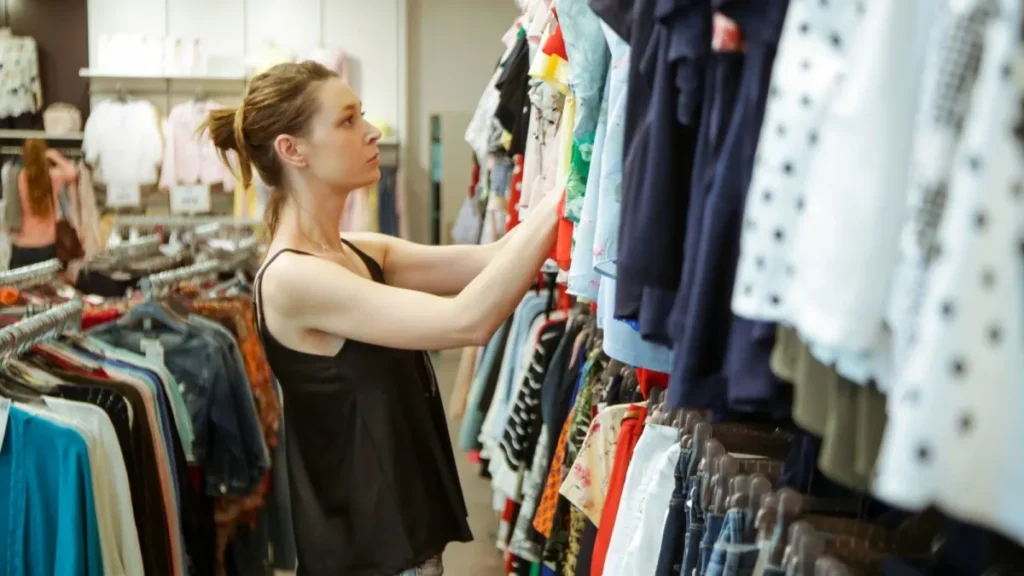Introduction
The market for used clothes has grown exponentially over the past few years. With increasing awareness about sustainability and the rising cost of new apparel, many consumers are turning to second-hand clothing as a viable option. For those looking How to Earn Money by Selling Used Clothes. This guide will provide you with all the details you need to start and succeed in this business, covering everything from sourcing and pricing to marketing and sales strategies.
Understanding the Market
Why the Used Clothes Market is Booming
- Sustainability: Consumers are becoming more environmentally conscious, preferring to buy used clothes to reduce waste.
- Affordability: Second-hand clothes are significantly cheaper than new ones, attracting budget-conscious shoppers.
- Vintage Appeal: Unique and vintage items often found in used clothing stores are highly sought after.
- Resale Platforms: The rise of online resale platforms like eBay, Poshmark, and Depop has made it easier to sell used clothes.
Market Segments
- High-End Fashion: Designer and branded clothing that can fetch higher prices.
- Everyday Wear: Affordable clothing for daily use.
- Vintage and Unique Items: Rare and vintage pieces that appeal to collectors and fashion enthusiasts.
- Children’s Clothing: Fast-growing segment due to the rapid growth of children.
Getting Started
Sourcing Used Clothes
- Your Own Closet: Start by selling items you no longer wear.
- Thrift Stores: Purchase items in good condition from local thrift stores.
- Garage Sales: Find bargains at garage sales and estate sales.
- Online Marketplaces: Platforms like Craigslist and Facebook Marketplace can be good sources.
- Bulk Purchasing: Buy in bulk from wholesalers who specialize in used clothing.
Quality Control
- Inspection: Check for stains, tears, and excessive wear.
- Cleaning: Wash and iron clothes to make them presentable.
- Repair: Minor repairs can significantly increase the value of an item.
Pricing Your Items
Factors to Consider
- Brand: Branded items generally fetch higher prices.
- Condition: Items in like-new condition can be sold at a premium.
- Rarity: Vintage or unique items can command higher prices.
- Demand: Research current trends to price items accordingly.
Pricing Strategies
- Competitive Pricing: Check similar listings on resale platforms to set competitive prices.
- Bundle Deals: Offer discounts for purchasing multiple items.
- Auction Style: For rare items, consider using auction-style listings to maximize profit.
Where to Sell
Online Marketplaces
- eBay: Ideal for a wide range of items, with an auction and fixed-price options.
- Poshmark: Focuses on fashion and accessories, with a user-friendly interface.
- Depop: Popular among younger shoppers looking for trendy and vintage items.
- ThredUp: A consignment store that handles the selling process for you.
- Facebook Marketplace: Great for local sales with no shipping required.
Physical Locations
- Consignment Shops: Partner with local consignment shops to sell your items.
- Flea Markets: Set up a booth at local flea markets to reach a broad audience.
- Garage Sales: Organize your own garage sale to quickly sell items.
Marketing Your Clothes
Product Listings
- High-Quality Photos: Use clear, well-lit photos showing multiple angles.
- Detailed Descriptions: Include size, brand, condition, and any flaws.
- Keywords: Use relevant keywords to improve searchability.
Social Media
- Instagram: Use Instagram to showcase your items and link to your online store.
- Pinterest: Create boards featuring your items to attract potential buyers.
- Facebook Groups: Join buy/sell/trade groups relevant to your items.
Promotions and Discounts
- Seasonal Sales: Offer discounts during holidays and special occasions.
- Referral Programs: Encourage existing customers to refer friends.
- Flash Sales: Create urgency with limited-time offers.
Shipping and Handling
Packaging
- Secure Packaging: Ensure items are securely packaged to prevent damage.
- Eco-Friendly Options: Use recyclable materials to appeal to eco-conscious buyers.
Shipping Options
- Flat Rate: Offer flat-rate shipping for simplicity.
- Calculated Shipping: Charge based on the buyer’s location and the weight of the item.
Handling Returns
- Clear Policies: Define your return policy clearly in your listings.
- Customer Service: Respond promptly to buyer inquiries and concerns.
Managing Your Business
Inventory Management
- Organized Storage: Keep items organized and easily accessible.
- Tracking Sales: Use spreadsheets or inventory management software to track sales and inventory.
Financial Management
- Budgeting: Keep track of expenses, including sourcing, shipping, and platform fees.
- Taxes: Keep records of all transactions for tax purposes and consult with a tax professional if needed.
Scaling Your Business
- Increase Inventory: Gradually increase your inventory as your business grows.
- Hire Help: Consider hiring help for tasks like photography, listing, and shipping.
- Expand Platforms: List your items on multiple platforms to reach a wider audience.
Success Stories
Case Studies
- Personal Stories: Highlight successful individuals who have made a living from selling used clothes.
- Tips from the Pros: Share advice from experienced sellers on what works and what doesn’t.
Conclusion
Selling used clothes can be a profitable and sustainable business if approached correctly. By sourcing quality items, pricing them strategically, and leveraging online and offline selling platforms, you can build a successful side hustle or even a full-time business. With the growing demand for affordable and eco-friendly clothing options, now is a great time to enter the market. Follow this comprehensive guide to navigate the challenges and maximize your profits in the used clothes industry.
















